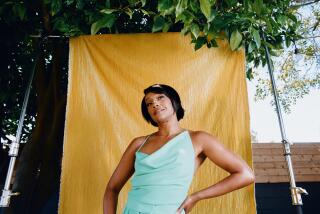Figurative Expressions
Dolls are no mere playthings for assemblage artist Beverly Heath. Over the years, Heath has transformed the Altadena home she shares with her husband, jazz great Albert “Tootie” Heath, into a doll’s house on a human scale. The fireplace is adorned with hundreds of colorful buttons, beads, photographs and figurines, each symbolic of “the connectiveness of our lives.” Walls, shelves, drawers, tables, floors and artwork are populated with dolls from every corner of the world as well as her own creations, which Heath views as “voices” that communicate between the seen and unseen worlds.
It was her grandmother who first taught her about the practical as well as the occult significance of dolls. “My grandmother was incredibly grounded to the earth and to spiritual things,” says Heath, 65. “She had tremendous respect for black folk and their culture and history, and she expressed that oftentimes through quilting, dolls and games. We made corn-silk dolls on her back porch in the all-black community of Kinloch, Missouri. She would tell me stories about slavery and use the dolls as part of the narrative. That allowed me to figure out that the world wasn’t so much good and bad but both--there were good people who did bad things and bad people who did good things.”
By age 14, Heath had collected 56 dolls. There were preacher men, church ladies and working women, representatives of the physical and spiritual worlds she saw. Later, when Heath became a mother, “I needed things I was not in the position to buy. I would make things to put on the walls.”
After she began to exhibit and sell her pieces, Heath, a self-taught artist who has shown at venues such as the L.A. Art Exchange and the Folk Tree in Pasadena, the dolls became part of the work. “I started to read and investigate traditional African religion,” she says. “I looked at what the Africans who were enslaved brought with them through the Middle Passage. I saw my dolls as the face and voice of the people who came here.”
Heath “deconstructed” dolls and added them as elements of assemblage pieces, including dozens of altars using amulets, pins, charms and emblems of healing. “In the beginning the altars spoke to traditional African religion and healing, but then the dolls began to reflect the community and the present,” she says. “I found myself making altars that had to do with crack cocaine--smashed mirrors and dolls turned upside down.”
Lately Heath and several women friends have formed a collective called the Boat. One of their projects imports dolls made by South African women afflicted with HIV, and Heath and her own work were recently part of a conference in Inglewood on women and HIV. “All cultures use dolls to express who they are,” she says. “My dolls embody the human experience, which is rooted in constant change. They speak to deeper things than cars and jewelry and the commodification of everything.”
More to Read
The biggest entertainment stories
Get our big stories about Hollywood, film, television, music, arts, culture and more right in your inbox as soon as they publish.
You may occasionally receive promotional content from the Los Angeles Times.






